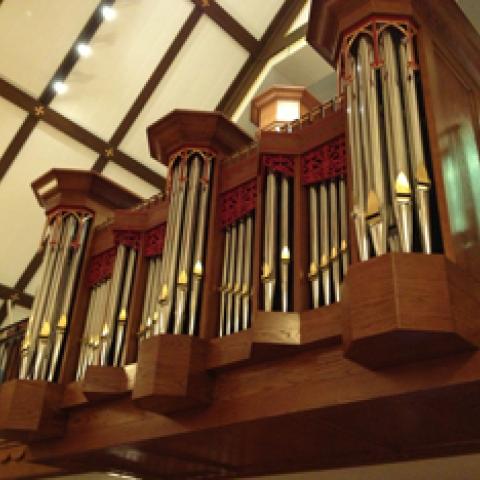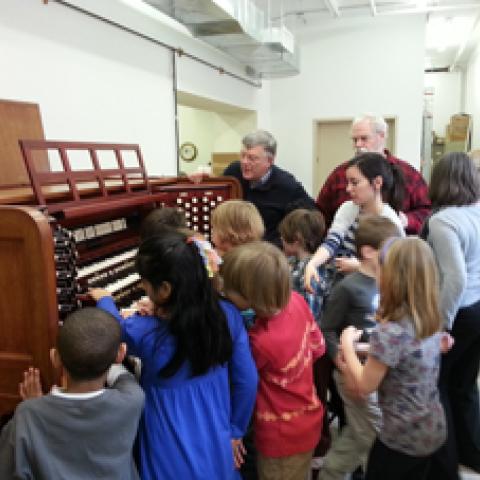
The new Buzard Opus 42 organ at St. Bridget’s Catholic Church, Richmond, Virginia, was introduced to the choristers of St. Bridget Parish Boy Choir immediately following the instrument’s completion on October 1, as part of the choir’s ongoing education about pipe organs. Organist and Choirmaster Allen Bean explained the various families of tone and the excited youngsters displayed their enthusiasm for what they saw and heard.
Allen Bean introduced the Buzard organ to the parish in concert on September 28, and an ongoing effort of “Organ Evangelism” is underway to interest young people in the workings and playing of the new organ.
St. Bridget Parish Boy Choir is a non-auditioned parish choir for boys with unchanged voices in second grade and older. Choir membership remains steady at 10–12 choristers each year, who benefit from the RSCM’s Voice for Life program. The choir rehearses one hour per week during the school year, sings at liturgies approximately once a month, and for special liturgical and musical events. The Parish Boy Choir has sung with the Parish Girl Choir (of approximately 30 choristers) at the Kennedy Center for the Performing Arts in 2011 and as guests of the American Youth Harp Ensemble at Alice Tully Hall, Lincoln Center, in 2013.
The organ was inaugurated by Ken Cowan in concert on November 15. Ecclesiastical dedication of the organ will take place at the 5:30 Mass on Saturday, December 7. For information: www.buzardorgans.com.




